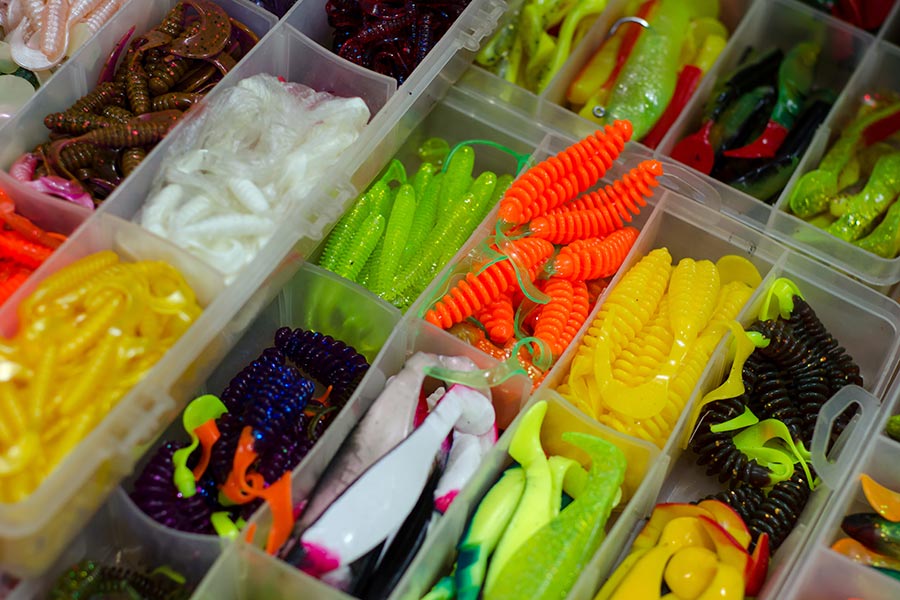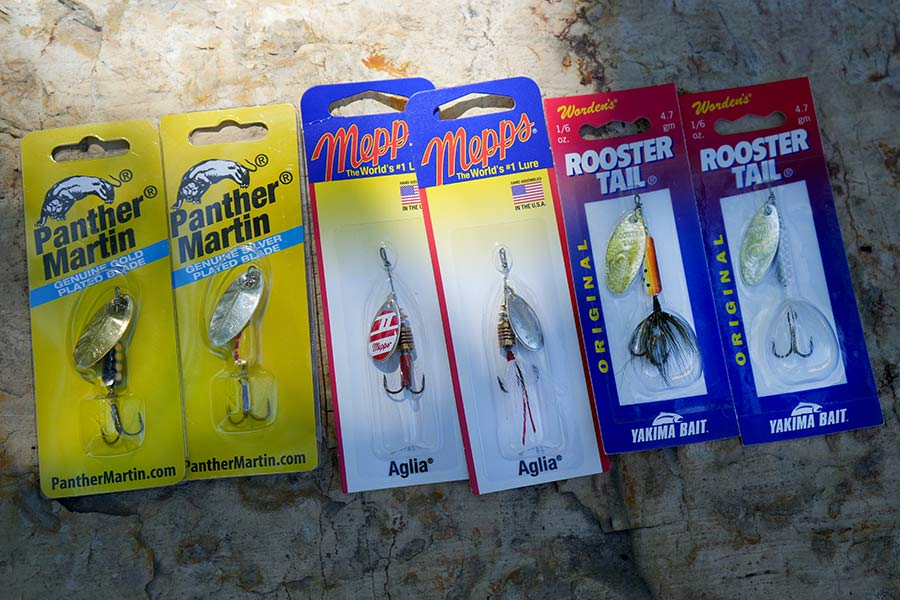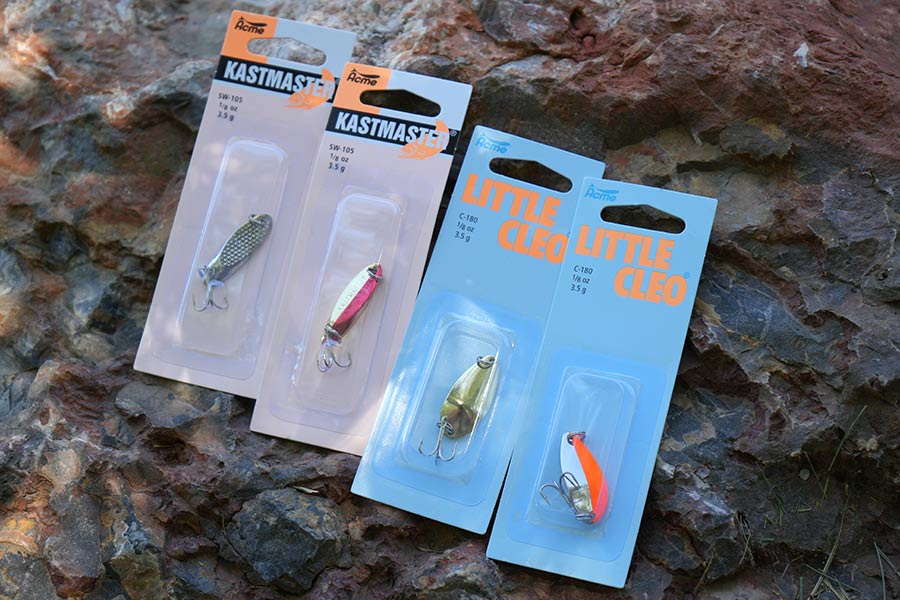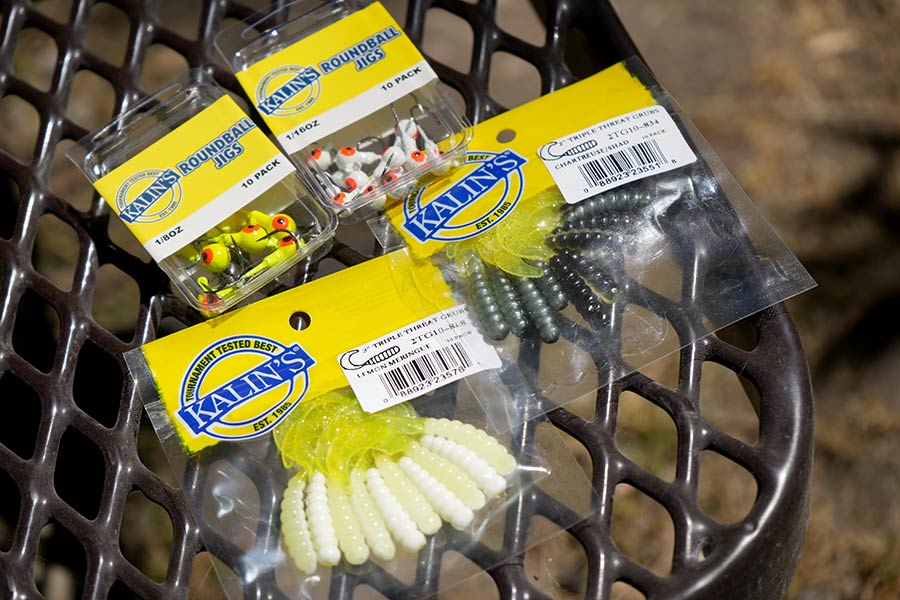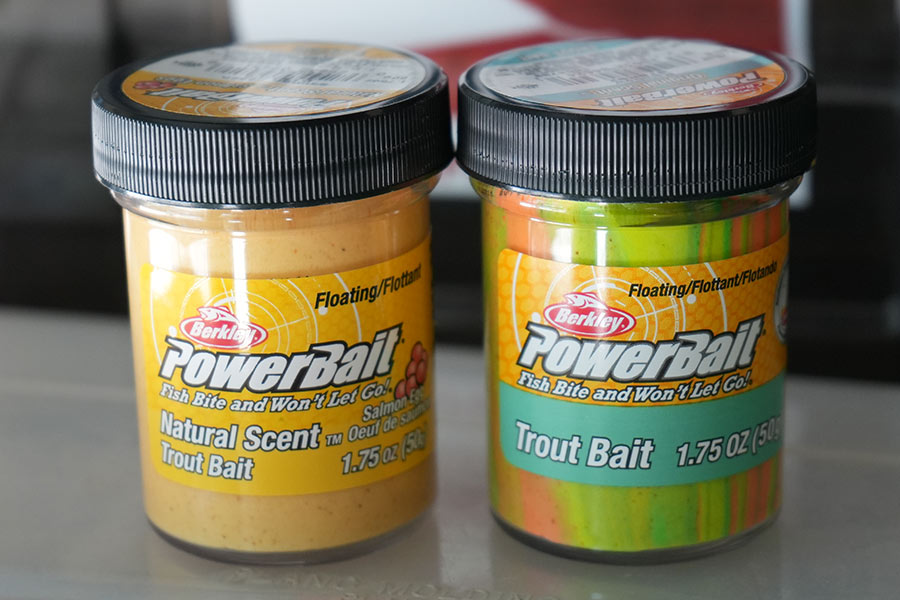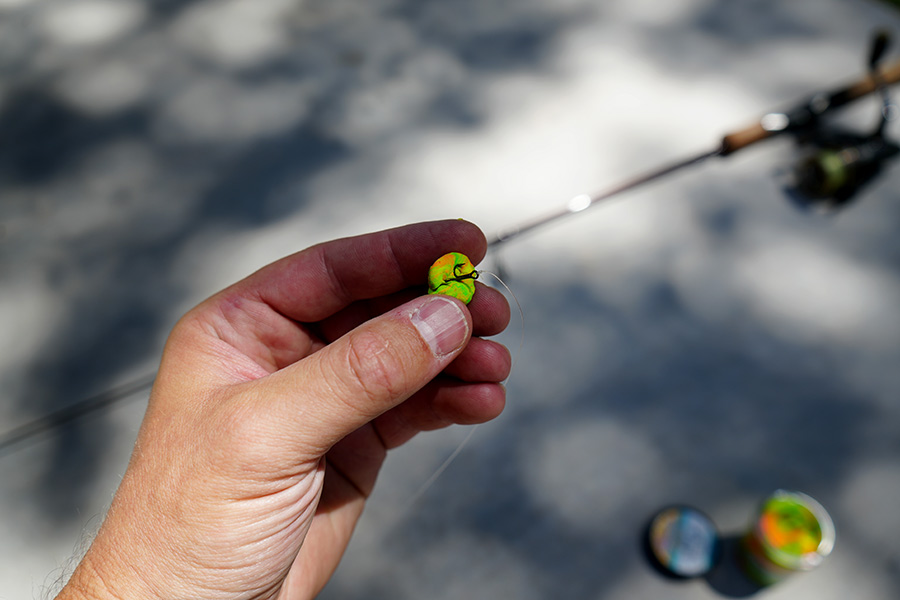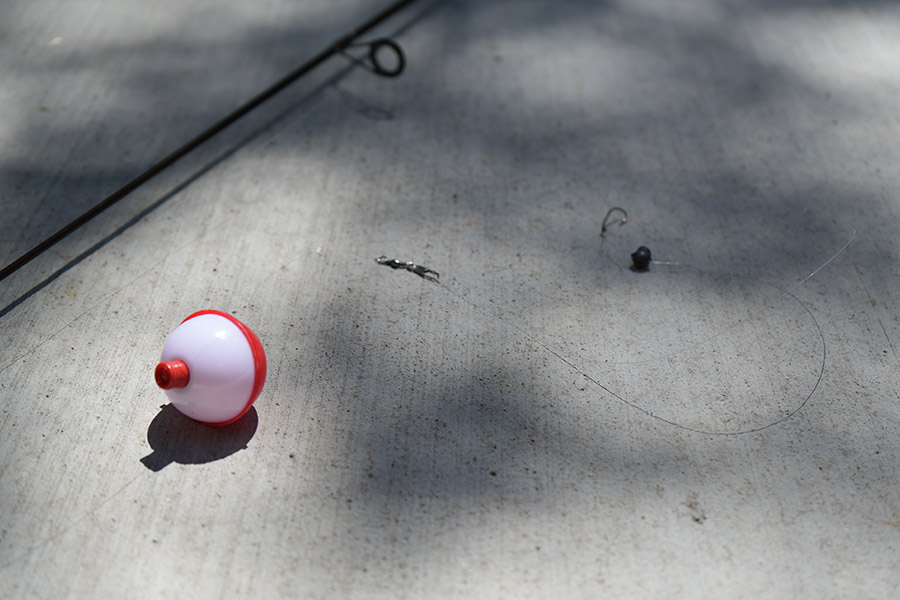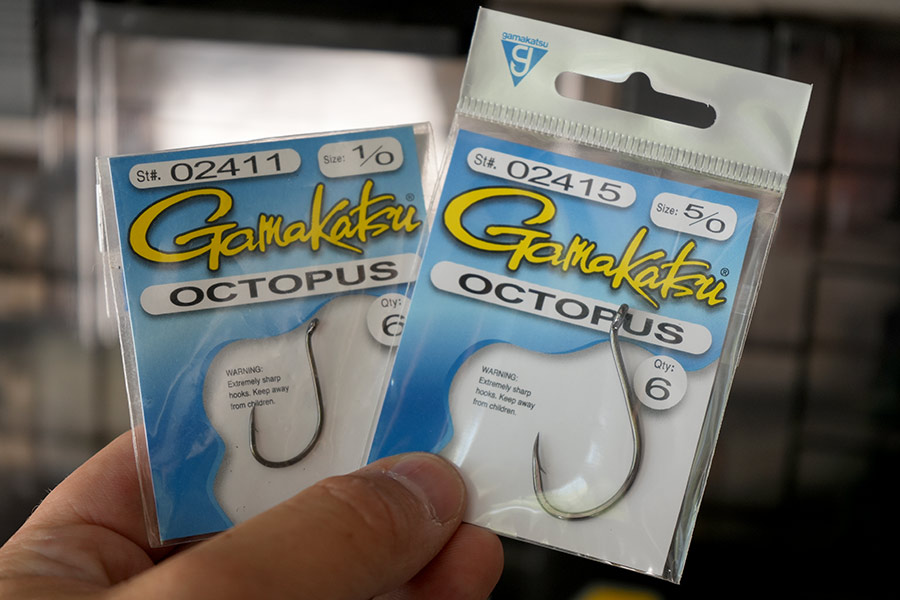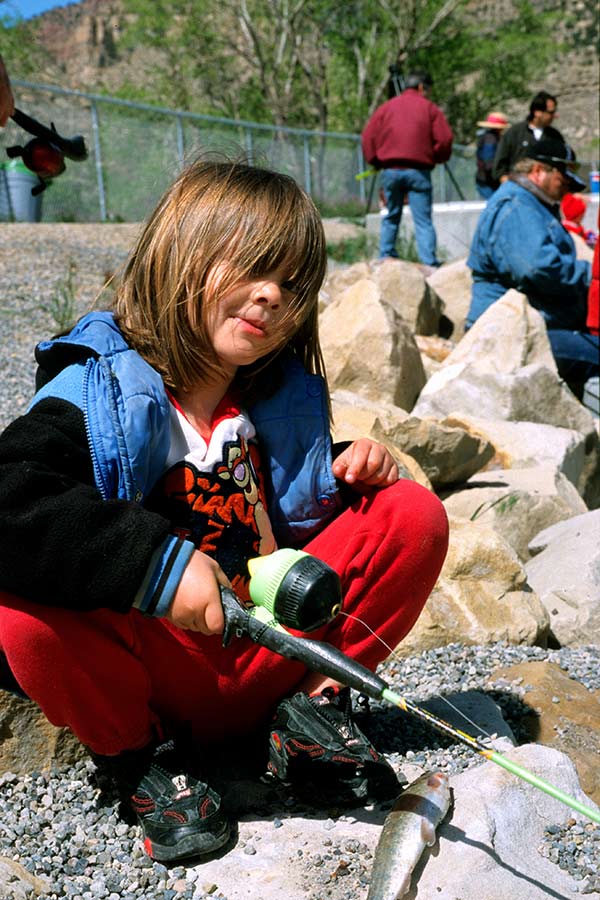Learn to fish: lure and bait selection
Tips for stocking your tackle box to fish for common species in Utah
Chris Crockett and Michael Packer
Standing in the aisle of a sporting goods store or angler supply shop and looking at what seem to be thousands of lures, hooks and bait options can seem overwhelming. And almost as many books and online resources have been dedicated to the topic of lure selection.
To help narrow down some choices that will help beginner anglers get started, we'll cover a few of the basics that usually work well for catching common Utah fish species like rainbow trout, panfish and catfish.
Fishy behavior
So, why are there so many different types of flies, lures and bait? All are meant to attract fish by imitating food sources, which is how you get a fish to bite onto the lure or bait and be snagged by a hook.
Artificial lures attract fish by looking similar to or moving like food sources that fish would find in nature, though in some conditions fish will gulp just about anything! Some lures even have a rattling component that creates vibration in the water, which helps attract curious fish even if the water conditions are cloudy or murky.
Natural baits — such as earthworms and mealworms — are effective because their texture, odor and color are appealing to many kinds of fish. If natural baits are allowed where you are fishing, they are relatively easy to fish with, often just needing a basic hook setup.
Keep in mind that we don't get any kind of kickback from the brands or products mentioned in this post. These are just suggestions for easy-to-find, effective lures and baits.
Now, let’s dive in on some rigging suggestions to catch some fish!
New to fishing?
- See the Utah Fishing Guidebook (guía en español, Guía de pesca de Utah) for the state's fishing rules and regulations, including what kind of fish you can catch in Utah, and how many fish you can keep.
- Buy a fishing license (ages 12 and older).
- Find places to fish near you.
- Fishing access for anglers with physical challenges.
In-line spinners
In-line spinners are designed to mimic a small fish, and they usually consist of a small, round metal or plastic body with a spinning blade and hook attached.
Some tips on selection:
- Multiple makes and models exist, but some of our favorites are Yakima Rooster Tails, Mepps Aglia spinners and Panther Martin spinnerbaits.
- Size and weight vary depending on conditions, but a good rule is to use 1⁄16- to ⅙-ounce spinners for small trout in streams or stocked ponds. Use slightly heavier ones (¼ ounce) for fish in larger reservoirs.
- Classic color combinations include silver, gold, chartreuse, white, yellow and everything in between!
Fish to catch with in-line spinners
Use small spinners to catch panfish and trout. Larger ones can attract largemouth bass and wipers.
Spoons
Spoons are also meant to mimic a small fish and consist of a flattened, oblong piece of metal. The spoon wobbles erratically when retrieved or jigged, resembling an injured bait fish (what the fish might think is an easy meal).
- Spoons are made by dozens of manufacturers in endless configurations, but some of our favorites are Jake's Spin-A-Lures, and Acme spoons such as Kastmaster or Little Cleo.
- Sizes range from ⅛ ounce for small trout, to ⅜ ounce for large trout or deep water.
- The compact design and weight of spoons often helps you cast them more easily than in-line spinners. Spoons are very versatile and can be used with many different fishing techniques.
- Classic colors include silver, white or gold, and they are often embellished with bright spots or stripes.
Fish to catch using spoons
Spoons will catch trout and nearly all other sportfish in Utah. They are especially effective for small panfish, largemouth bass and tiger muskie.
Curly tailed grubs
Curly tailed grubs are one of the most versatile lures in your tackle box. Using the combination of a curly tailed grub and jig head is designed to mimic a small baitfish.
- Good sizes for most panfish range from 1 ½- to 3-inch grubs, which can be fished on a 1⁄16- to ⅛-ounce jighead.
- Classic curly tailed grub colors include white, chartreuse, silver and gray, often with stripes or sparkles.
- The lure can be retrieved through the water column, bounced on the bottom, or even jigged vertically.
- For more flash and vibration (both good things to attract a fish) you can purchase jig heads with attached spinners or removable wire spinner arms.
Fish to catch using curly tailed grubs
You can use a curly tailed grub (often in combination with a jig head) to catch panfish and nearly all other sportfish in Utah.
Natural and artificial baits
Natural or artificial baits — either fished on the bottom of a body of water or suspended under a bobber — are an effective way to catch many kinds of fish, and are especially well suited to beginners or anyone that enjoys a "sit and wait" approach to fishing. Important: No live fish can be used as bait in Utah, so all references to a fish or shrimp are for dead/cut bait.
When fishing with bait, hook quality is one of the few areas we recommend spending the extra money on quality components. Hooks of low quality definitely reduce your chances of successfully catching and landing fish. For more information on hook types and how to choose what kind of hook to use, check out this video.
Natural baits come in a wide variety, and it's important to check before you head out to make sure you can use natural bait at the waterbody where you'll be fishing. (See the Fish Utah interactive map or the Utah Fishing Guidebook.)
- Natural baits such as worms (redworms, nightcrawlers, etc.), are sold live, and you can often find them refrigerated at a bait shop or at stores near popular fishing spots.
- When available, crickets and grasshoppers also make great baits. A small piece of lead split shot about 3 inches above the hook will help the presentation.
- Some of our favorite baits for channel and bullhead catfish include shrimp, chicken breast, common carp, Utah chub, white bass (where legal) and nightcrawlers.
- Natural baits are usually used by threading a worm (or a piece of one) or other bait on a single J-hook (size 8–12) two or three times. Some people like to leave about 1 inch of worm dangling off the hook to help entice bites.
Artificial baits, such as PowerBait (and similar brands) are a malleable dough bait typically made from a mixture of PVC plastic, fish attracting oils or flavors, and colorants.
- Artificial bait comes in either floating or sinking varieties, and in an endless selection of colors, flavors and even glitter varieties.
- Most artificial baits are intended to be molded directly onto a hook and are very easy to use.
Fish to catch using bait
Just about anything!
When using bait, you'll need to slightly vary your setup and technique depending on what kind of fish you are targeting.
To catch trout, you can cast a hook-and-worm combo or artificial bait on a hook.
- Cast out to let the bait sink near or on the bottom of the pond or stream, or suspend it under a bobber. (Learn more about bait fishing setups and techniques here.)
- To catch trout in most Utah waters using artificial bait, use a marble-sized piece of floating PowerBait molded to a treble hook (size 12–16). Rig a sliding sinker (or even split shot) 12 to 24 inches above the treble hook. The floating PowerBait will suspend the bait just off the bottom, where it's more easily seen and picked up (especially by trout).
- Another option is to suspend a marble-sized piece of artificial bait under a floating bobber to catch fish higher in the water column. A size 12–16 treble hook or even a size 10–12 J-hook can be used in this scenario with sinking artificial baits.
Bait fished under a bobber is a low stress way to catch panfish.
- The most common baits are worms (red worms, nightcrawlers, waxworms) fished on a small hook suspended under a bobber.
- Hook size depends on the size of the fish you are pursuing, and a size 6–10 long shank hook will cover most circumstances.
- Choosing a thin wire hook with a long shank will help you more easily remove the hook from the small mouth of bluegill or other small-mouthed panfish. These hooks are often referred to as "light wire" or "Aberdeen" styles.
Both channel catfish and bullheads can be caught on several readily available natural baits. There are two basic ways to present bait to catfish, either suspended under a bobber or sitting on (or very near) the bottom of the water body. Some tips for catching catfish:
- The size of the bait varies, but for large channel catfish you can use chicken, carp or other bait cut into 2-by-2-inch (or larger) chunks or slices.
- Small channel catfish and bullheads with smaller mouths will be more readily caught on 1-by-1-inch baits.
- Choosing the right hook is very important. Hooks for large channel cats range from 4/0–6/0, those for smaller channel catfish and bullheads will be in the size 4–2/0 range. Our favorite hook for catfish is the "circle" variety, which is sharply curved back in a circular shape. Circle hooks are designed to catch in the corner of a fish's mouth and help prevent deeply hooked (often called "gut hooked") fish. Circle hooks are easier to remove than other styles, and are especially useful if you are practicing catch-and-release fishing.
- To fish with bait suspended under a bobber, suspend a baited hook under a floating bobber. A small lead split shot is often placed a few inches above the hook and bait to aid in the presentation. Hook size depends upon the size of the fish you are pursuing and the size of the bait you wish to present (see above). Look for a bobber that is buoyant enough to support the weight of your bait or lure, but not so large that it becomes difficult to detect subtle bites. In shallow water, try to adjust the distance between the bobber and bait to present the bait 6 inches to 2 feet off the bottom of the water body.
- Bait on the bottom is one of our favorite presentations for catfish. This setup utilizes what is often referred to as a "fish finder rig" or "Carolina rig." It consists of a sliding sinker, a swivel, a leader line, and the hook and bait. The sliding sinker allows the fish to pick up the bait without feeling any tension and being scared away. An even more simple version can be used with multiple lead split shots.
Things to know before you go
If you've already decided where you want to go fishing, you're off to a good start in figuring out what fish species will most likely be present. This will help you decide what kinds of lure or bait will work best. We recommend checking out our Fish Utah interactive map, which includes options to view common species, what kinds of fish have been stocked (and how recently) and fishing forecasts for where you're headed.
Also, you'll want to make sure your Utah fishing license is up to date (required for anglers 12 years of age and older).
Keep in mind that regulations vary by individual waterbody. At some waters, only artificial flies and lures are allowed, and some allow only certain types of bait.
Fortunately, the Utah Fishing Guidebook contains all the information you need to get started. The guidebook can readily be found online in English and Spanish, or you can pick up a print copy at all DWR offices, license agents and many sporting goods stores all over the state. See the Rules for specific waters section beginning on page 25 of the Utah Fishing Guidebook to see if the waterbody you are heading to has special regulations. If you need any assistance understanding the rules, don't hesitate to contact one of our offices for any questions you may have.
Get started fishing!
- How to tie basic fishing knots
- Learn to fish: planning ahead for success
- Best freshwater bait and lures
- How to cast a line and catch fish
- How to release a fish
- Learn more about fly fishing
- The basics of ice fishing
- More about fishing gear and tackle




